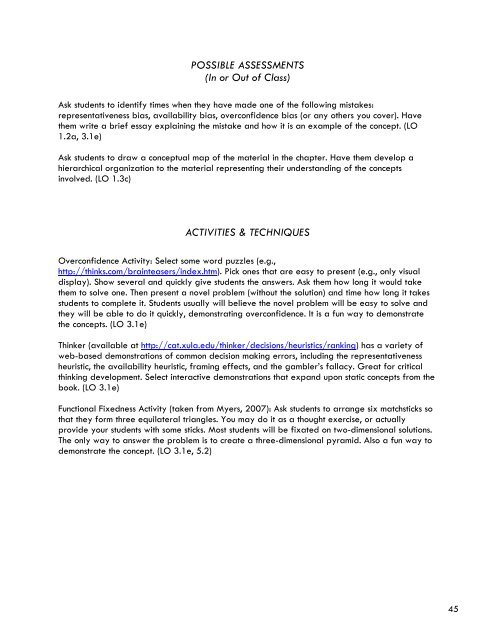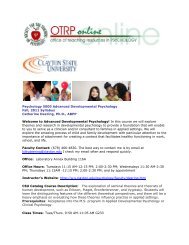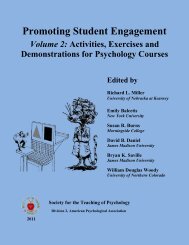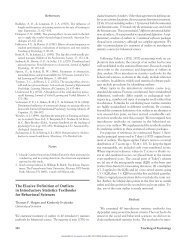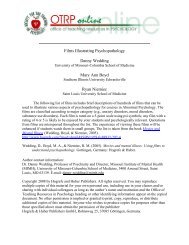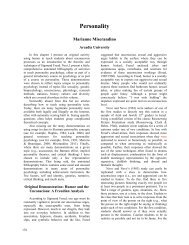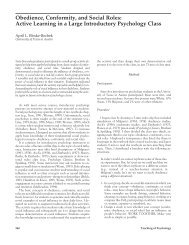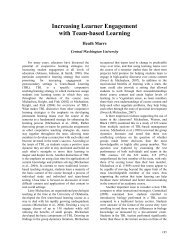INTRODUCTORY PSYCHOLOGY TEACHING PRIMER Early Career ...
INTRODUCTORY PSYCHOLOGY TEACHING PRIMER Early Career ...
INTRODUCTORY PSYCHOLOGY TEACHING PRIMER Early Career ...
Create successful ePaper yourself
Turn your PDF publications into a flip-book with our unique Google optimized e-Paper software.
POSSIBLE ASSESSMENTS<br />
(In or Out of Class)<br />
Ask students to identify times when they have made one of the following mistakes:<br />
representativeness bias, availability bias, overconfidence bias (or any others you cover). Have<br />
them write a brief essay explaining the mistake and how it is an example of the concept. (LO<br />
1.2a, 3.1e)<br />
Ask students to draw a conceptual map of the material in the chapter. Have them develop a<br />
hierarchical organization to the material representing their understanding of the concepts<br />
involved. (LO 1.3c)<br />
ACTIVITIES & TECHNIQUES<br />
Overconfidence Activity: Select some word puzzles (e.g.,<br />
http://thinks.com/brainteasers/index.htm). Pick ones that are easy to present (e.g., only visual<br />
display). Show several and quickly give students the answers. Ask them how long it would take<br />
them to solve one. Then present a novel problem (without the solution) and time how long it takes<br />
students to complete it. Students usually will believe the novel problem will be easy to solve and<br />
they will be able to do it quickly, demonstrating overconfidence. It is a fun way to demonstrate<br />
the concepts. (LO 3.1e)<br />
Thinker (available at http://cat.xula.edu/thinker/decisions/heuristics/ranking) has a variety of<br />
web-based demonstrations of common decision making errors, including the representativeness<br />
heuristic, the availability heuristic, framing effects, and the gambler’s fallacy. Great for critical<br />
thinking development. Select interactive demonstrations that expand upon static concepts from the<br />
book. (LO 3.1e)<br />
Functional Fixedness Activity (taken from Myers, 2007): Ask students to arrange six matchsticks so<br />
that they form three equilateral triangles. You may do it as a thought exercise, or actually<br />
provide your students with some sticks. Most students will be fixated on two-dimensional solutions.<br />
The only way to answer the problem is to create a three-dimensional pyramid. Also a fun way to<br />
demonstrate the concept. (LO 3.1e, 5.2)<br />
45


